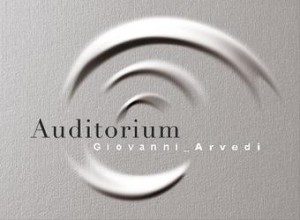
The Auditorium Giovanni Arvedi is a 464-seat jewel of acoustic engineering. The new hall was obtained from the original Assembly Hall of Palazzo dell’Arte.
The acoustics project was the work of the acoustics engineer Yasuhisa Toyota of Nagata Acoustics, one of the world’s leading experts in this sector and project head of more than 50 concert halls throughout the world, from the Mariinsky Theatre Concert Hall in St. Petersburg to the Walt Disney Concert Hall in Los Angeles.
The hall was originally 36 metres long, 14 metres wide and 10 metres high. The analyses carried out by Nagata Acoustics revealed the need to increase the free section of the hall in order to improve the sound yield. It was therefore decided to lower the level of the stage, digging down below the existing floor. The deep foundations, 3.5 metres below the current floor level, made this operation possible. The result was a ceiling height above the stage of 14 metres which has contributed to obtaining a level of acoustic perfection such as to also allow the hall to be used for recordings.
The architectonic choices were made in dialogue with the acoustics project: movable acoustical curtains behind the historic glass-free doors to create variable absorbing surfaces depending on requirements; more movable acoustical curtains beside the stage are hidden by a wood lining with a surface 50% open. A 60-cm high cavity wall which acts as a soundbox below the central stage, made with a particular wood: yellow Alaskan cedar.
The ceiling is modelled with rounded shapes and lines so as optimize the diffusion of sound: lines combined with the need to have a mass of 100 kg per surface square metre.
These expedients have contributed to obtaining a sound reverberation time of 1.5 seconds when the hall is empty and 1.4 seconds when full.
So as to retain the possibility of using natural light, though insulating against noise from outside, the original openings have been fitted with double windows with high-performing acoustic glass.
The acoustic level obtained is so high as to allow live recordings of concerts performed inside the hall, profiling Cremona and its musical tradition as an example of excellence at an international level.

